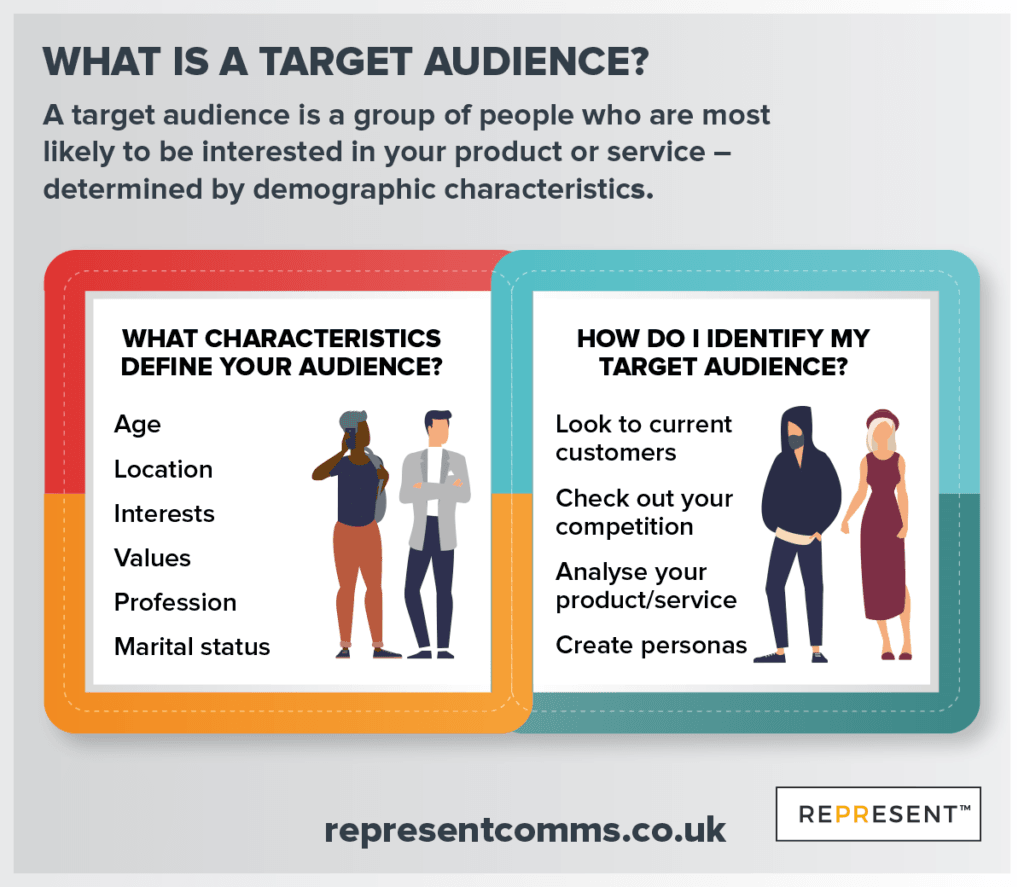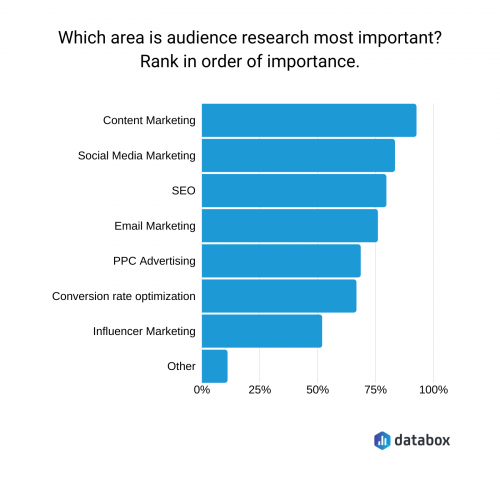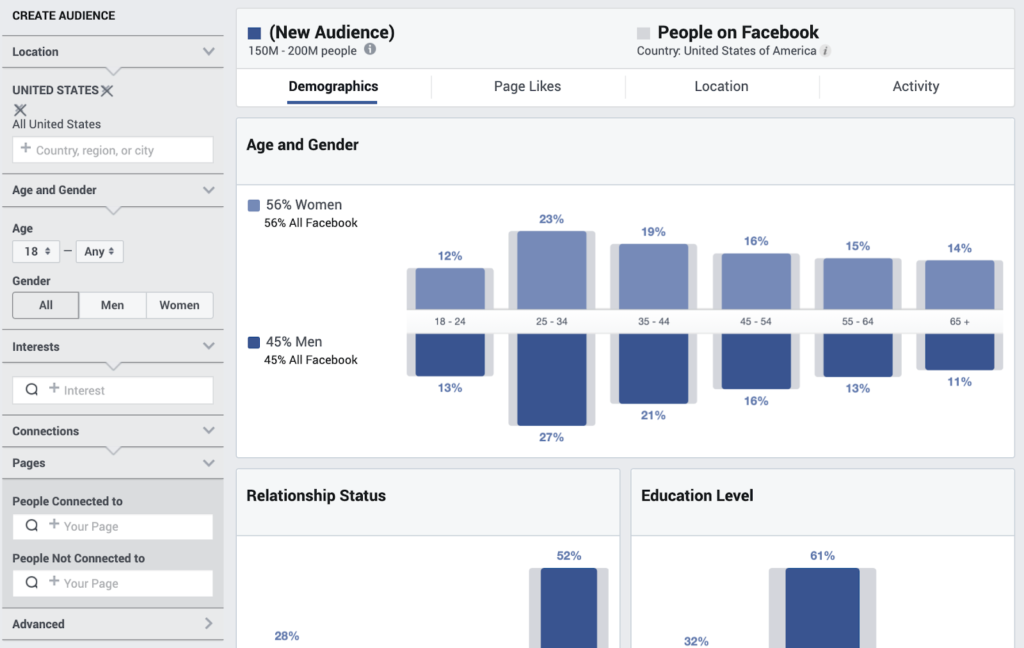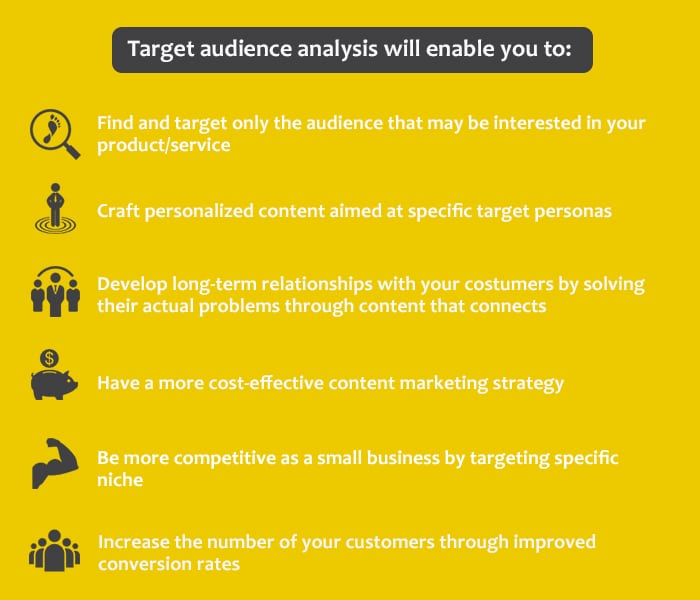
A thorough understanding of your audience is an essential factor in your brand’s success. Having absolute knowledge about your target audience can help you in creating more effective marketing campaigns. Your brand’s target audience is one of the key things to keep in mind when framing your messages.
As a business, it is important to have a clear idea of who your target audience is. This influences your marketing strategy and decision-making as well. Every brand aims at acquiring more customers and offering a satisfactory experience to them. But how can you do that effectively? The answer lies in knowing the people whose needs you are catering to. Figuring out your brand’s target audience is the first step in this complex journey.

What Is a Target Audience?

A group of consumers who are characterized by their behavior or specific demographics is defined as a target audience. These demographics could be age, gender, employment status, income group, location, and more. This knowledge about the target audience is what helps your brand understand the tastes and preferences of your customer base. Having a target audience also ensures the brand’s efforts in designing and executing campaigns don’t go to waste.
With the right knowledge about your brand’s target audience, your marketing efforts can be properly directed to the correct group of people. Apart from demographics, interests and buying history are two other elements that play a crucial role in defining a brand’s target audience. If you want to convert your audience, your marketing effort could be in the form of an email newsletter, landing page, social media content writing, and more.
How to Find Your Brand’s Target Audience

Finding your brand’s target audience is not as easy a task as it appears to be. Let’s take a quick look at a few steps that can help you figure out your brand’s target audience.
1. Use analytics tools
In order to find out about your brand’s target audience, you can use tools, such as Google Analytics. This can provide you with the exact demographic details of your audience. The analyzed data is presented in the form of tables, charts, and graphs for you to understand and absorb the information better. These tools offer you detailed insights about who visited what sections of your websites. Some other effective analytics tools that can be used are as follows:
- Apple App analytics
- HockeyStack
- Sprout Social
- StatCounter
- Mixpanel
2. Conduct surveys
Surveys are, by far, one of the most effective methods of gathering information. When creating a survey, create a demographic and psychographic segmentation of your target market. The demographic segmentation could include age, gender, income, education, occupation, and other qualifications. Psychographic segmentation, on the other hand, is made up of social status, activities, interests and opinions, and lifestyle choices.
You can also use a Q&A as a part of a newsletter to interview some of your customers. Make sure the number of questions is limited, and create questions that are close-ended and can be precisely answered. Collecting responses from a sample audience can help you clearly define your brand’s target audience. The success of your survey depends on the effectiveness of the questions you have framed.
3. Create buyer personas
Buyer personas help you stay aligned with the type of content you need to create. If your audience is interested in technology, writing reviews about new gadgets, new developments in the IT sector, etc., might be areas that can help you bolster your brand identity.
4. Tap into social media analytics
With most of our lives being engaged in the digital realm, social media is one of the most important arms of brand marketing today. Find out what social media channels your customers engage most on, what hashtags they use frequently, and what type of content they consume most on those channels.
This helps you observe what type of content is working best, thereby hinting at what segment of the audience market is engaging with your content. Tapping into the social media analytics and finding out about the social media consumption patterns and behavior of your potential customers can also be very useful in selecting the right collaborators and social media influencers for your brand campaigns.
5. Implement Audience Insights on Facebook

Facebook is a golden tool for marketers and advertisers. It has, indeed, stood the test of time, and it still manages to stay relevant. You can access Facebook Insights for free. It tells you about the location, lifestyle choices, and purchasing habits of your customers. This can help you in more ways than just finding your target audience.
6. Monitor website performance
Your website is where your audience first interacts with you. It is important to focus on the different sections of your website and how the content on those specific sections engages with the audience. Once you have figured out the strong areas of your website, you can implement the changes accordingly to the rest of your content, thereby attracting more people. Some questions to ask when assessing your website performance are as follows:
- Which pages on your website generate the most traffic?
- What topics does your audience respond most to?
- What kinds of devices are being used by the audience to access your website?
- Which pages have not particularly performed well?
- Do your website visitors prefer video content over written content, or vice versa?
7. Keep your social media audiences in mind
When finding your brand’s target audience, it is crucial to keep in mind that a large chunk of your customer base is what you might have acquired from the social media channels of your brand. Social media audience is an essential part of your brand’s target audience.
8. Observe your competitors
It is important to examine your competitors, as it can lead you to important information about your own target audience. Sign up for their newsletters and follow them on social media accounts, as part of your target audience research. Having a slight idea of your competitor’s marketing strategies can give your brand first-hand insights into the kinds of people you are designing products and services for.
What Are the Benefits of Knowing Your Target Audience

Knowing your target audience helps you maximize your resources and time. It is important to define the target market that will be requiring your services. “Casting your net wide” is no longer the right practice. As a brand, you cannot chase everyone; you have to narrow your list down to the people you will be targeting as customers. With a clearly defined brand target audience, you can make the most of your time with minimum effort, and also save your resources from being wasted.
Another benefit of having a target audience is that you’ll be serving a target niche. There will be fewer competitors in the specific niche that only your brand caters to. With a defined target audience, you can serve them with outright value. Knowing your target audience gives you the advantage of being able to predict their behavior at various stages of the sales funnel.
Knowing your brand’s target audience helps you in designing better content and making effective social media strategies. Almost every business has an online presence today. In order to know what your audience consumes, you have to be primarily well-versed with who they are. Your content needs to address this buyer persona.
Knowing your audience is what gives you a certain initial power as a brand. It gives you the opportunity to simply focus your time, energy, and effort on specific clients and individuals. The people who will not find value in your products or services will be eliminated early in this process, thereby saving your time and resources. In the longer run, your marketing spend will be more effectively utilized. You can have a strong referral base as a brand by focusing on a niche audience. As a brand, you should avoid wasting time chasing low-value prospects. This problem can only be solved by clearly defining the target audience for yourself.
Brand Target Audience Examples
Let’s understand what a brand’s target audience is with the help of a few examples.
1. Lightlife Foods
Lightlife Foods is a plant-based food product company. Its Instagram features high-quality recipe images, while its Facebook is heavy on video content. Lightlife Foods enjoys popularity on both platforms. Its target audience is individuals who are plant-based food lovers and enjoy watching recipes and food facts.
2. Nomad Lease
Nomad Lease caters to individuals who are homeowners but are also travel enthusiasts at the same time. It is a property management company that finds tenants for your house while you are away on a trip. It has a specific and highly flushed out target audience, which can be defined by two characteristics: firstly, they are homeowners; secondly and most importantly, they like to travel. These two traits help precisely define what products and services can be best designed for them, addressing their pain points.
3. Target
Target is another brand that is pretty active on a number of social media platforms. But its content type for each social media platform is different from the other. Target has a separate target audience for each social media platform it is active on. Since its audience on Twitter mostly comprises millennials, the language it uses on Twitter is relaxed, conversational, and easy. On Facebook, Target engages with audiences who have families. Target has successfully used the concept of target audience segmentation for successful marketing over the years.
4. Airbnb
Airbnb is a popular name among millennials today. The mission of the company is to provide travelers with affordable homestay options worldwide. While there are several options of accommodation for travelers, what defines Airbnb’s target audience is the fact that these individuals are not just travelers who are looking for hotels, but they’re also looking for a touch of local experience within an accommodation. However, Airbnb’s marketing strategy now targets multiple segments of the traveler market.
As a brand operating in the digital era, you might think targeting as many people as possible with your products and services might be an excellent idea, but it is not exactly so. As a brand, you simply cannot create products and services for everyone to launch yourself in the market. It is crucial to figure out your brand’s target audience before you can scale your marketing and advertising efforts.
Every campaign is a serious investment of time as well as resources. Therefore, it is important to be aware of who you are marketing to as a brand. Knowing who your target audience is is a defining characteristic of a successful brand.
Key Takeaways
- “Target audience” is the term used to define a group of consumers who are characterized by their behavior or a specific demographic. This helps a brand understand the tastes and preferences of its customer base.
- Analytics tools can be extremely useful in finding out the demographic details of its target audience.
- In order to figure out who your target audience is, it is important to have buyer personas in place.
- Knowing your brand’s target audience helps you maximize your resources and time. As a brand, you have to narrow your list down to the customers you will be focusing on.
- Collecting responses from a sample audience via surveys is an immensely effective way to define a clear target audience for your brand.
- By knowing your brand’s target audience, you can eliminate the people who don’t find value in your offerings. Remember, you can’t cater to everyone.

FAQs
In media studies, any group of people who receives a message via any media carrier are known as media audiences.
A secondary target audience is defined as a group of people who are not likely to buy a product or service from you, but they are still somewhat important to your brand. They could have been customers in the past or potential customers in the future. A secondary audience includes neighbors and associates, spouses, children, etc.
In order to identify your target audience, there are four levels of segmentation, which include demographic, geographic, behavioral, and psychographic.
Audience engagement strategies are methods of increasing participation on the audience’s part. It improves learning and heightens satisfaction. Well-engaged audiences can help improve your brand identity and become the unofficial ambassadors of your brand.
Target audience analysis is the process by which a brand defines or describes its audience through different demographics. This could include age, gender, income groups, location, interests, and opinions, among others. Target audience analysis is essential for other business functions as well.
In order to appeal to your target audience as a brand, you can do the following.
1. Share your brand values with them.
2. Work with collaborators and social media influencers.
3. Reduce the sales effect of your communication.
4. Connect with the audience on an emotional level.
5. Publish case studies.
6. Constantly make an effort to improve your brand’s image.
Latest Blogs
Learn how to rank on AI search engines like ChatGPT, Perplexity, and Gemini by optimizing your content for authority, structure, and relevance. Stay ahead in AI-driven search with this strategic guide.
Explore the best healthcare SEO services for your medical practice. Improve online visibility and effectively reach more patients in need of your services.
Discover top social media agencies specializing in banking solutions, enhancing financial services and driving engagement.
Get your hands on the latest news!
Similar Posts

Branded Content
5 mins read
Brand vs. Branding vs. Brand Identity: The Difference

Branded Content
4 mins read
The 5 Best Brand Colors to Choose From in 2022

Branded Content
5 mins read